Colonial living rooms represent a timeless blend of elegance, functionality, and historical charm that continues to captivate homeowners today. This classic American design style, inspired by 18th-century colonial settlers, combines simple sophistication with practical comfort. Colonial living rooms embrace neutral color palettes, traditional furniture pieces, and natural materials that create warm, inviting atmospheres. Whether you're drawn to the rustic charm of early American colonial style or the refined aesthetics of British colonial influences, these design ideas will help you create a space that exudes both comfort and historical authenticity. From classic fireplace mantels to traditional furniture arrangements, colonial living rooms offer endless possibilities for creating sophisticated, lived-in spaces that honor the past while meeting modern needs.
1. Colonial Living Room Fireplace with Classic Brick Surround
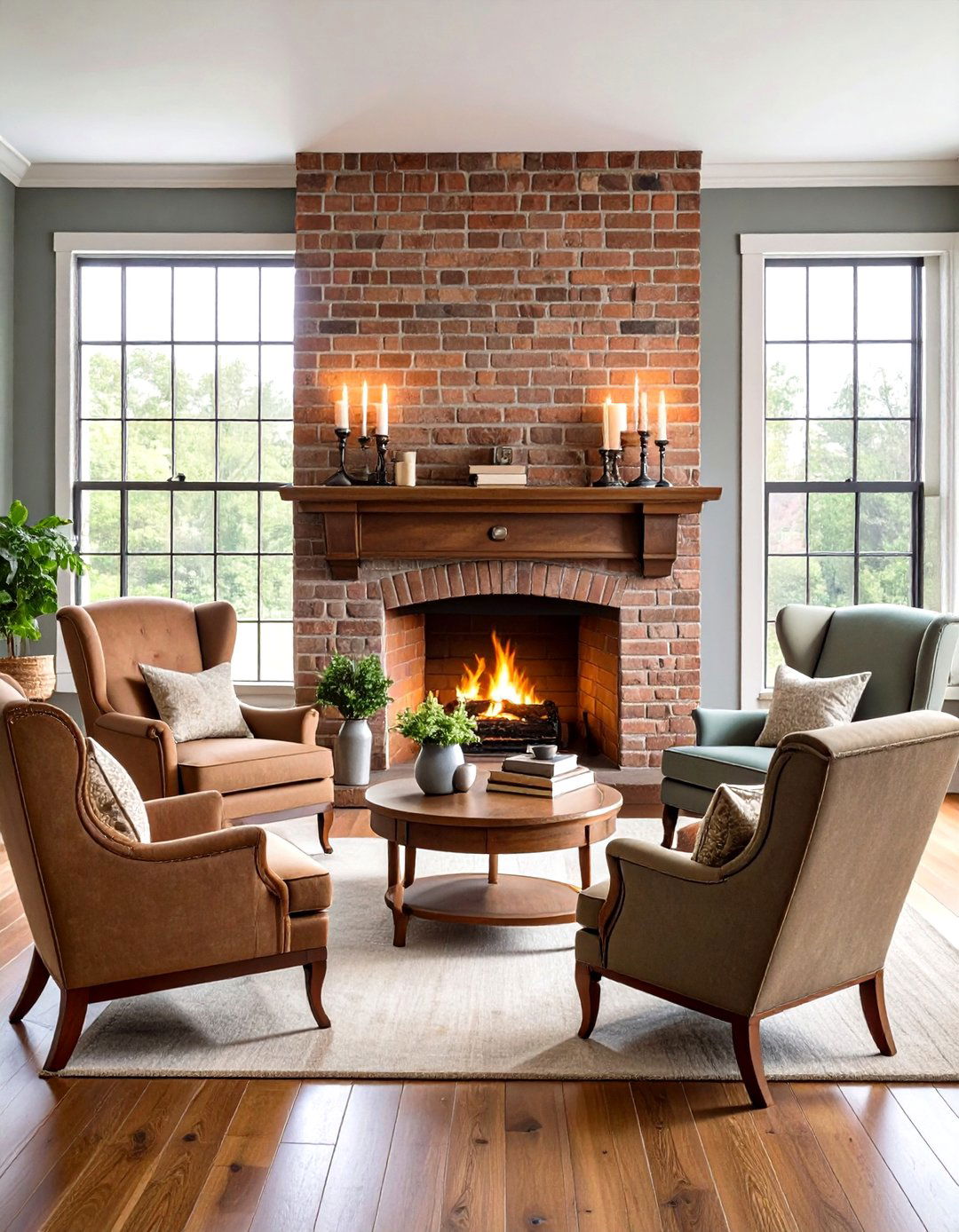
A traditional brick fireplace serves as the quintessential focal point in colonial living rooms, providing both warmth and historical authenticity. Create this timeless centerpiece by surrounding your firebox with aged brick and topping it with a simple wooden mantel crafted from pine, cherry, or walnut. Decorate the mantel with period-appropriate elements such as pewter candlesticks, antique books, and early American pottery. Position wingback chairs flanking the fireplace to create an intimate conversation area perfect for evening gatherings. Consider painting the surrounding walls in sage green or warm white to enhance the brick's natural character while maintaining the colonial color palette. Add brass fireplace tools and a wrought iron grate to complete this authentic colonial living room focal point that invites family gatherings year-round.
2. Colonial Living Room with Neutral Earth Tone Color Palette

Colonial living rooms favor neutral color palettes including shades of white, beige, cream, and soft earth tones that create calm and inviting atmospheres. Paint your walls in Benjamin Moore's Simply White or similar crisp whites, then incorporate warmer neutrals through furniture and textiles. This color scheme balances beautifully with sober furniture in dark tones and clean lines, preferably made from teak, mahogany, or acacia woods. Layer different shades of cream and beige through upholstered pieces, throw pillows, and window treatments. Add depth with touches of deep ebony and rich mahogany alongside natural textures for visual interest. This understated colonial living room color approach allows architectural features and quality furnishings to take center stage while creating a serene, timeless environment that feels both sophisticated and comfortable.
3. Colonial Living Room Featuring Traditional Wingback Chairs

Anchor your colonial living room with authentic wingback chairs that exemplify the period's emphasis on both comfort and refined craftsmanship. These classic seating pieces feature clean lines, elegant curves, and sturdy construction that defines colonial furniture. Choose chairs upholstered in rich leather or traditional fabrics like wool damask in deep burgundy, forest green, or navy blue. Position them strategically around your fireplace or facing each other to encourage intimate conversation. Focus on pieces with straight lines and elegant curves for a refined colonial look. Complement these statement chairs with matching footstools and side tables crafted from solid wood. The high backs and wings not only provide comfort and support but also create visual weight that grounds your colonial living room while honoring the practical elegance that defined furniture during America's colonial period.
4. Colonial Living Room with Hand-Hewn Exposed Ceiling Beams
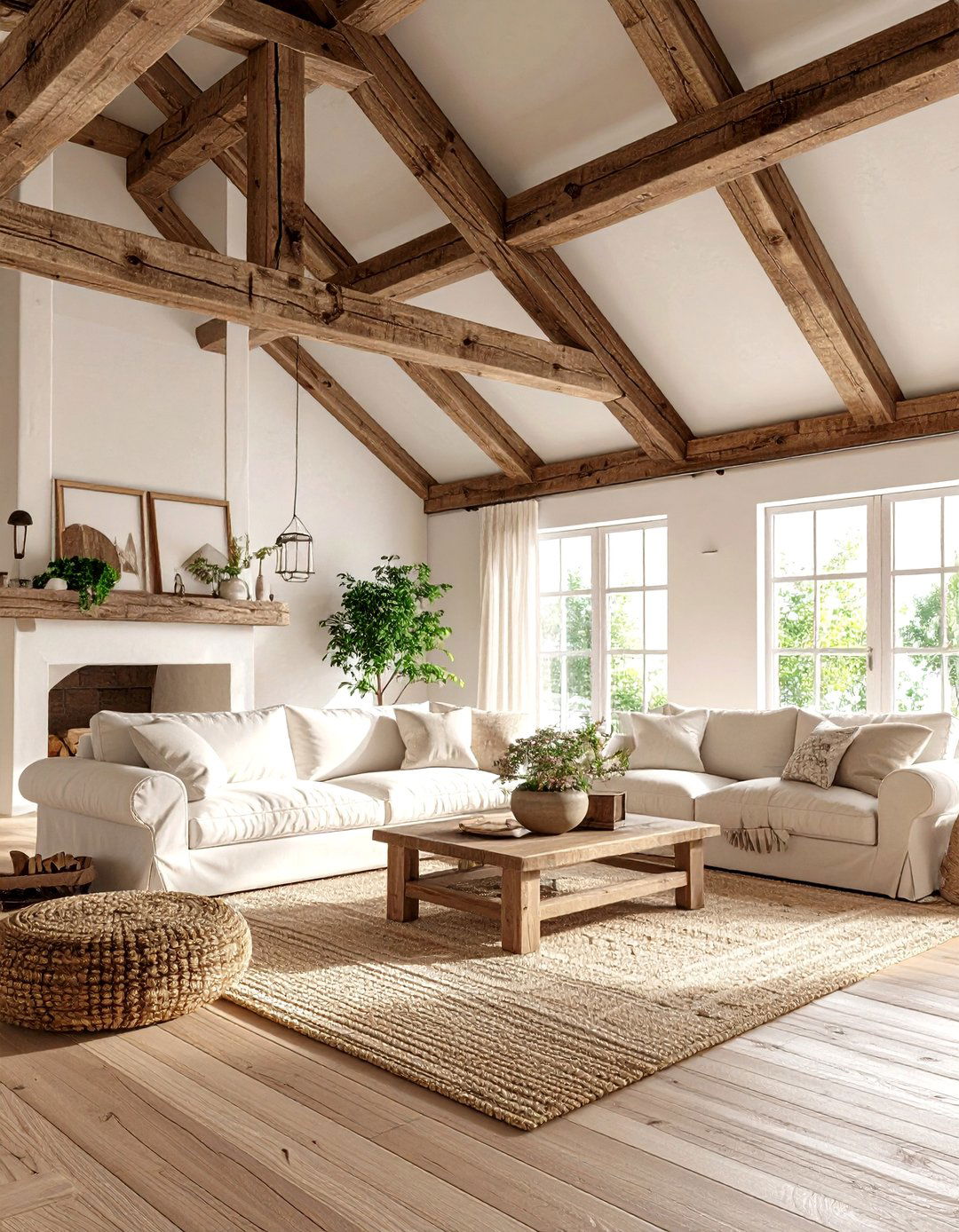
Transform your colonial living room with authentic hand-hewn exposed ceiling beams that immediately establish historical character and architectural interest. These weathered wooden elements echo traditional colonial construction methods and add rustic authenticity. Source reclaimed beams from old barns or historic buildings to achieve genuine patina and character marks that can't be replicated. Paint the ceiling between beams in warm white or soft cream to create contrast while maintaining brightness. Exposed wooden beams on the ceiling enhance the colonial aesthetic and add authentic architectural details. Complement these overhead features with period-appropriate lighting such as wrought iron chandeliers or wooden fixtures. The natural wood grain and weathered texture of exposed beams create visual warmth that perfectly balances the clean lines of colonial furniture while adding the rustic charm essential to this historic design style.
5. Colonial Living Room with Traditional Camelback Sofa Design
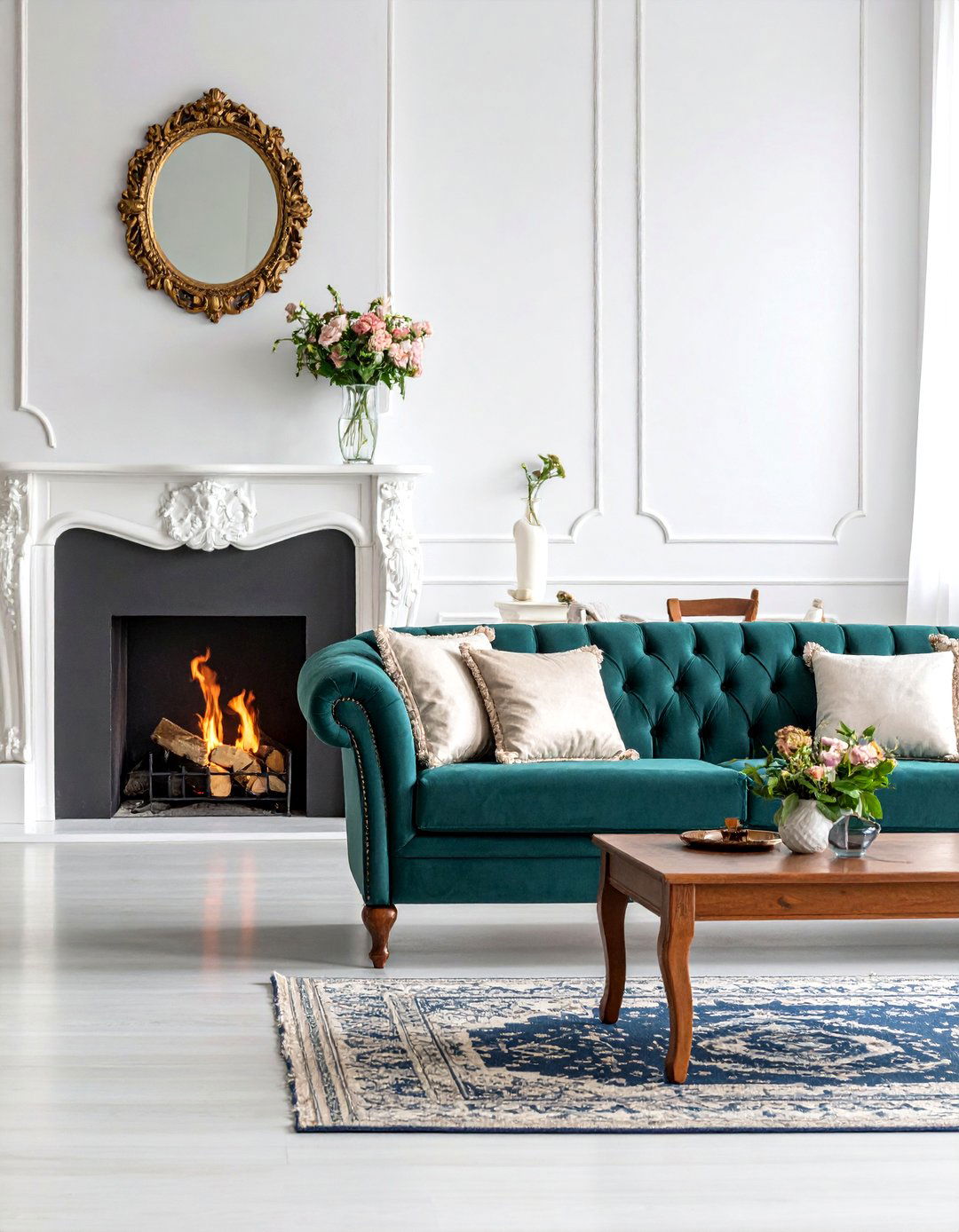
Camelback sofas represent quintessential colonial living room furniture with their distinctive curved backs and refined upholstery. Choose a sofa featuring the characteristic high center back that curves down to lower arms, traditionally upholstered in rich fabrics like wool, linen, or quality cotton blends. A large slip-covered sectional with neutral linen fabric creates authentic colonial appeal. Position your camelback sofa as the primary seating piece, facing the fireplace or arranged to encourage conversation. Select colors that complement your neutral colonial palette—deep blues, warm greens, or classic stripes work beautifully. Add coordinating throw pillows in traditional patterns like florals or plaids. These traditional furniture pieces feature clean lines and elegant curves that define colonial spaces. Complete the arrangement with a wooden coffee table and matching side chairs to create a cohesive colonial living room that honors historical design principles.
6. Colonial Living Room with Classic Toile Fabric Patterns

Toiles played an important part in colonial design, as Benjamin Franklin even brought toile fabrics back from France to his wife in the colonies. Incorporate these historical patterns through window treatments, upholstery, or decorative pillows to add authentic colonial charm. Choose traditional toile designs featuring pastoral scenes, florals, or historical motifs in classic color combinations like blue and white, red and cream, or green and ivory. Use woven fabrics, plaids, and florals for curtains and upholstery while incorporating muted colors to maintain a cohesive colonial look. Layer toile patterns carefully—use them as accent pieces rather than overwhelming the space. Combine toile curtains with solid-colored furniture or add toile throw pillows to neutral sofas. These printed fabrics offer connections to nature and culture that define colonial textile traditions. This approach creates visual interest while honoring the historical significance of these imported patterns in colonial American homes.
7. Colonial Living Room with Dark Wood Plank Flooring

Dark-toned wood floors are the preferred choice for colonial design, with laminate or parquet floors serving as practical alternatives. Install wide plank flooring in rich walnut, cherry, or pine with hand-scraped finishes that echo historical construction methods. Dark timber floorboards provide authentic colonial foundation enhanced by lightweight rugs and natural fiber floor coverings. Choose planks of varying widths to mimic the irregular lumber available during colonial times. Apply natural oil finishes that enhance the wood grain while providing practical protection. Consider collections featuring ebony, walnut, or chocolate finishes that complement colonial aesthetics. Top your colonial living room floors with traditional braided rugs, Persian runners, or natural fiber area rugs in jute or sisal. The rich, dark foundation creates dramatic contrast with light walls and furniture while providing the authentic base that grounds your entire colonial design scheme and honors the craftsmanship of early American builders.
8. Colonial Living Room with Brass and Pewter Lighting Fixtures
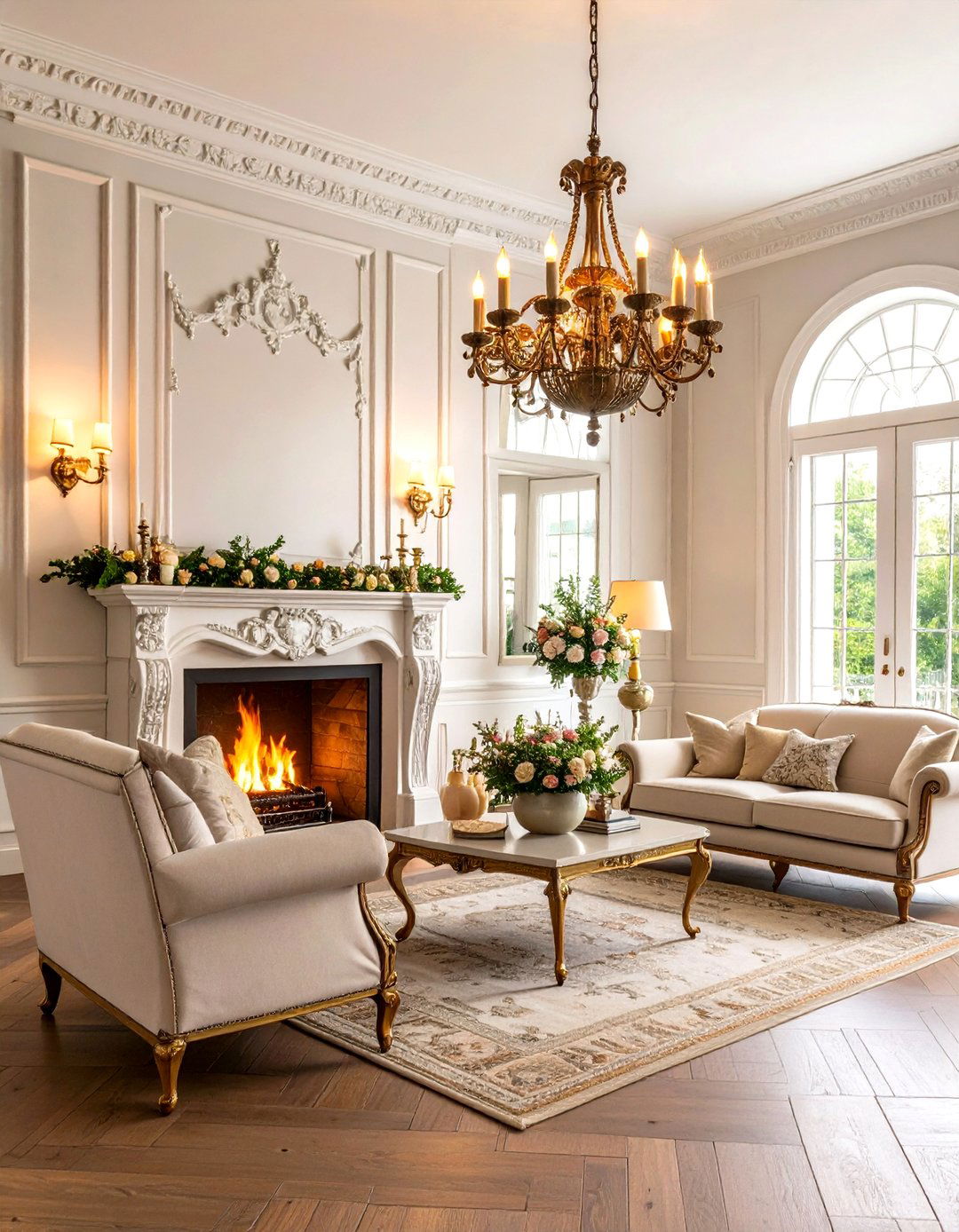
Illuminate your colonial living room with period-appropriate brass and pewter lighting fixtures that provide both function and historical authenticity. Classic fringed floor or table lamps are commonly associated with colonial style. Install a brass chandelier with candle-style lights above your seating area, or choose pewter sconces flanking your fireplace. Incorporate touches of copper and burnt umber through metallic accents. Select table lamps with brass bases and fabric shades in cream or soft yellow to provide warm ambient lighting. Consider wall-mounted sconces to flank fireplaces for added colonial character. Avoid modern finishes like chrome or brushed nickel that don't suit the period aesthetic. Layer different lighting sources—overhead fixtures, table lamps, and candles—to create the warm, inviting atmosphere essential to colonial living rooms. These metallic finishes develop beautiful patina over time, adding to their authentic appeal and historical character.
9. Colonial Living Room with Shiplap Wall Paneling Treatment
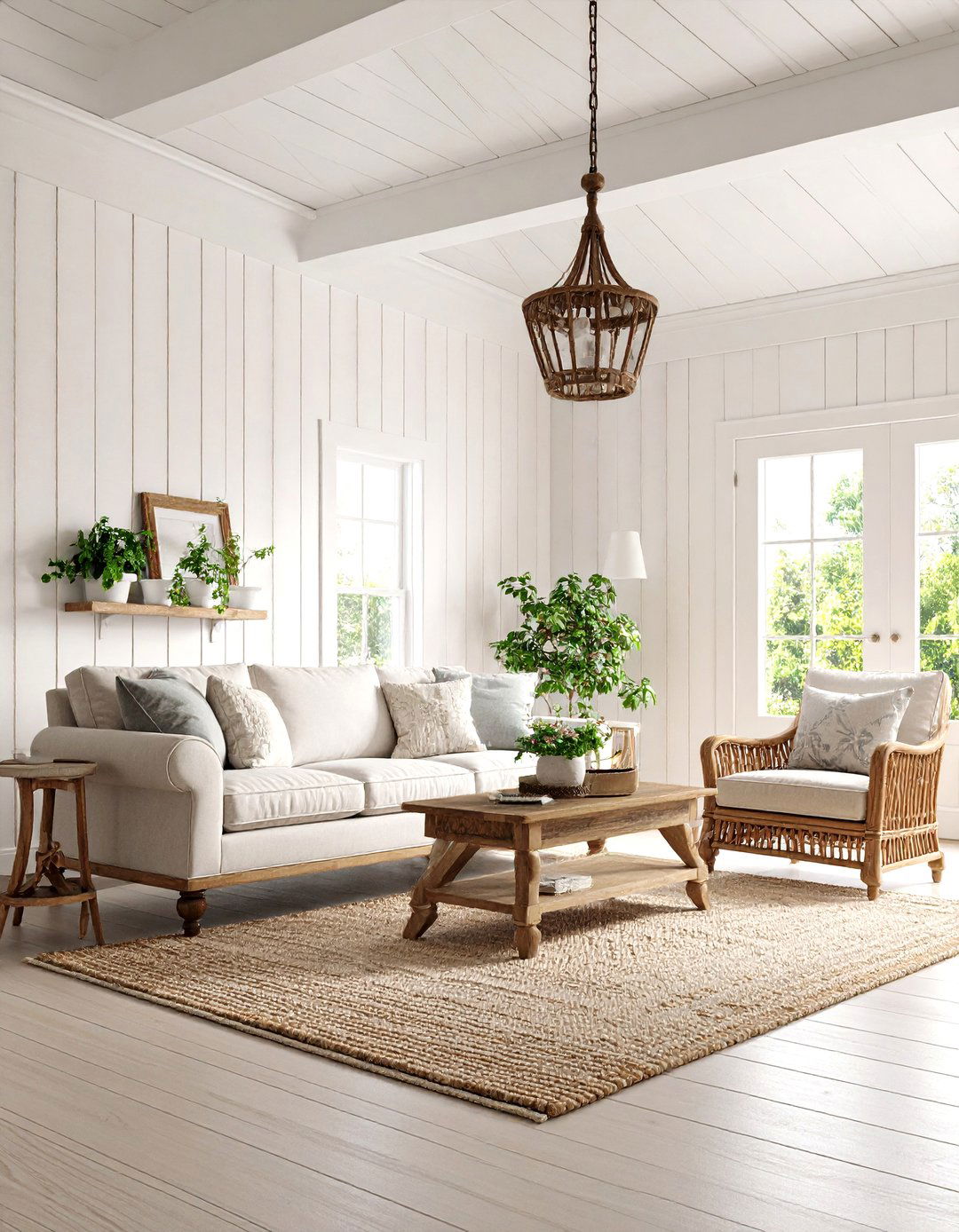
Clean white custom-milled shiplap provides authentic colonial wall treatment. Install horizontal shiplap paneling from floor to ceiling or as wainscoting extending halfway up the walls. Paint the shiplap in classic colonial white or soft cream to brighten the space while maintaining historical accuracy. Shiplap or beadboard would be historically accurate choices for colonial walls. This wall treatment adds texture and visual interest while honoring construction methods used in colonial homes. Vertical paneling combined with proper trim work enhances period authenticity. Top wainscoting with a chair rail and paint the upper walls in complementary colonial colors like sage green or warm gray. The horizontal lines of shiplap create visual width in smaller colonial living rooms while the painted finish reflects light beautifully. Complete this treatment with traditional baseboards and crown molding to achieve the refined simplicity that defines colonial architectural details and creates an authentic foundation for your period furnishings.
10. Colonial Living Room with Traditional Braided Area Rugs
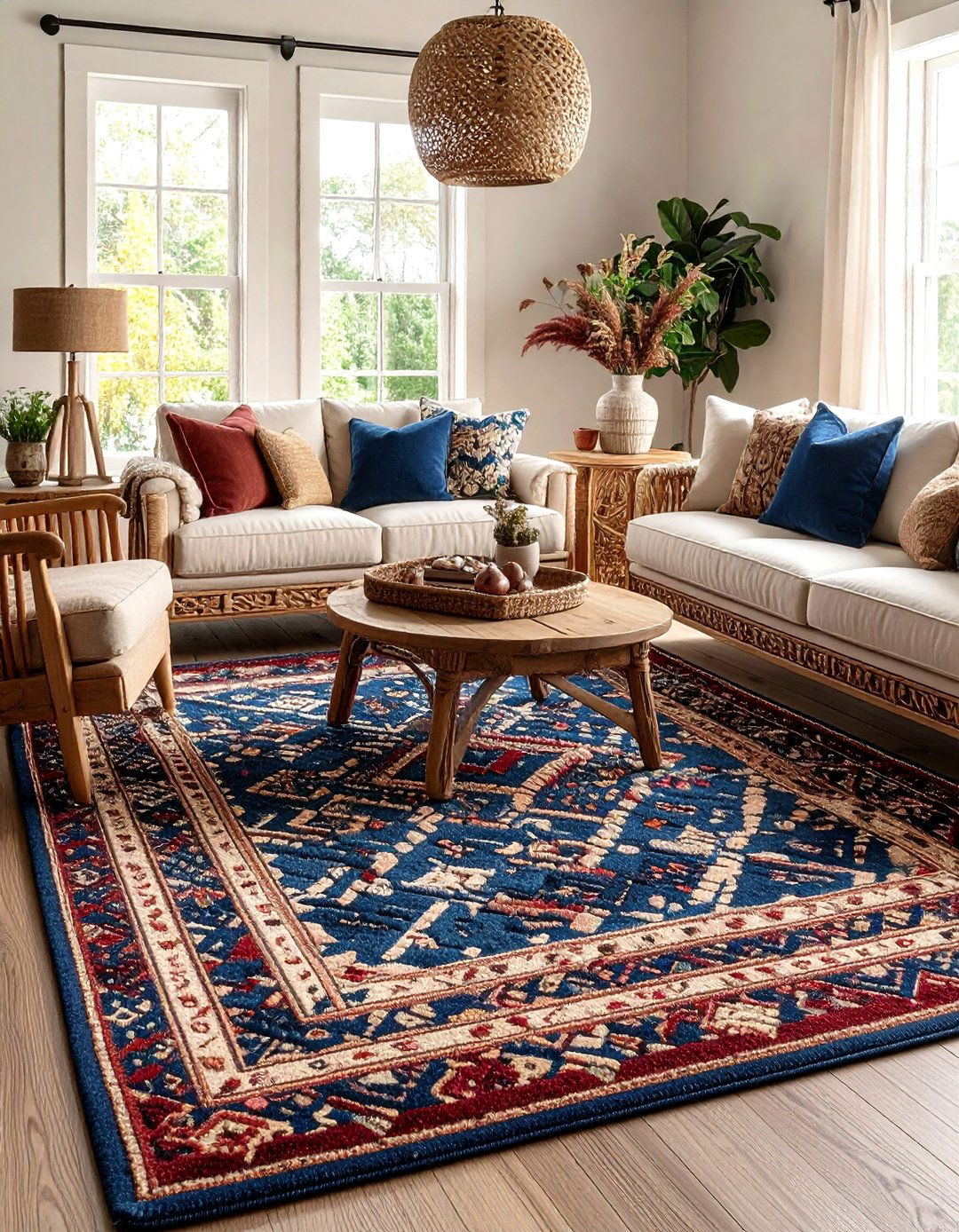
Colonial homes often feature large, long-pile rugs, though natural fiber rugs like jute, rattan, sisal, or bamboo work well in warmer areas. Layer traditional braided rugs in oval or rectangular shapes to define seating areas and add warmth to your colonial living room. Choose rugs in authentic colonial colors—deep blues, cranberry reds, sage greens, and warm browns woven together in classic patterns. Layer different textures with lightweight Turkish or Persian rugs, animal hides, or natural fiber seagrass and jute rugs. Position larger braided rugs under your main seating area, ensuring front furniture legs rest on the rug for proper scale. Add smaller accent rugs near doorways or reading nooks. Incorporating varied textures through materials like cotton, linen, and leather adds warmth and depth to colonial spaces. These handcrafted floor coverings provide essential texture while their muted colors complement wooden furniture and neutral walls perfectly, creating the cozy, lived-in atmosphere that defines authentic colonial living rooms.
11. Colonial Living Room with Antique Wooden Coffee Table Display

An antique butter churn serves as a unique coffee table, exemplifying colonial repurposing traditions. Choose substantial wooden coffee tables crafted from pine, cherry, or walnut that showcase visible grain patterns and traditional joinery methods. Wooden coffee tables with clean lines complement colonial furniture aesthetics. Look for pieces with simple, functional designs—trestle tables, drop-leaf styles, or hutch tables that served multiple purposes in colonial homes. Rustic and vintage furniture designs are most common in colonial decorating. Style your colonial living room coffee table with period-appropriate accessories like wooden bowls, pewter candlesticks, or leather-bound books. Add a simple pottery vase with dried flowers or greenery for natural beauty. Stacks of antique books enhance colonial character. Avoid cluttering the surface—colonial design emphasizes functionality and simplicity. Choose pieces with visible wear and patina that tell stories of daily use, honoring the practical heritage of colonial craftsmanship.
12. Colonial Living Room with Multi-Pane Window Treatments

Colonial houses often feature multi-pane windows with small glass panes arranged in grid patterns that add charm and character. Dress these distinctive windows with appropriate treatments that honor their historical significance while providing privacy and light control. Install simple white or cream cotton curtains hung from wooden rods, avoiding elaborate valances or modern hardware. Billowing natural white cottons and muslins drape beautifully over colonial windows. Choose fabrics like linen, cotton, or muslin in solid colors or subtle patterns like small florals or checks. White or beige curtains with occasional intense color details add authentic colonial warmth. Consider interior shutters in natural wood finishes that can be closed for privacy while maintaining the window's architectural integrity. Natural white cottons and light fabrics help cool spaces and complement the colonial aesthetic. These treatments should enhance rather than compete with the beautiful gridwork of multi-pane windows that define colonial architecture.
13. Colonial Living Room with Traditional Windsor Chair Seating
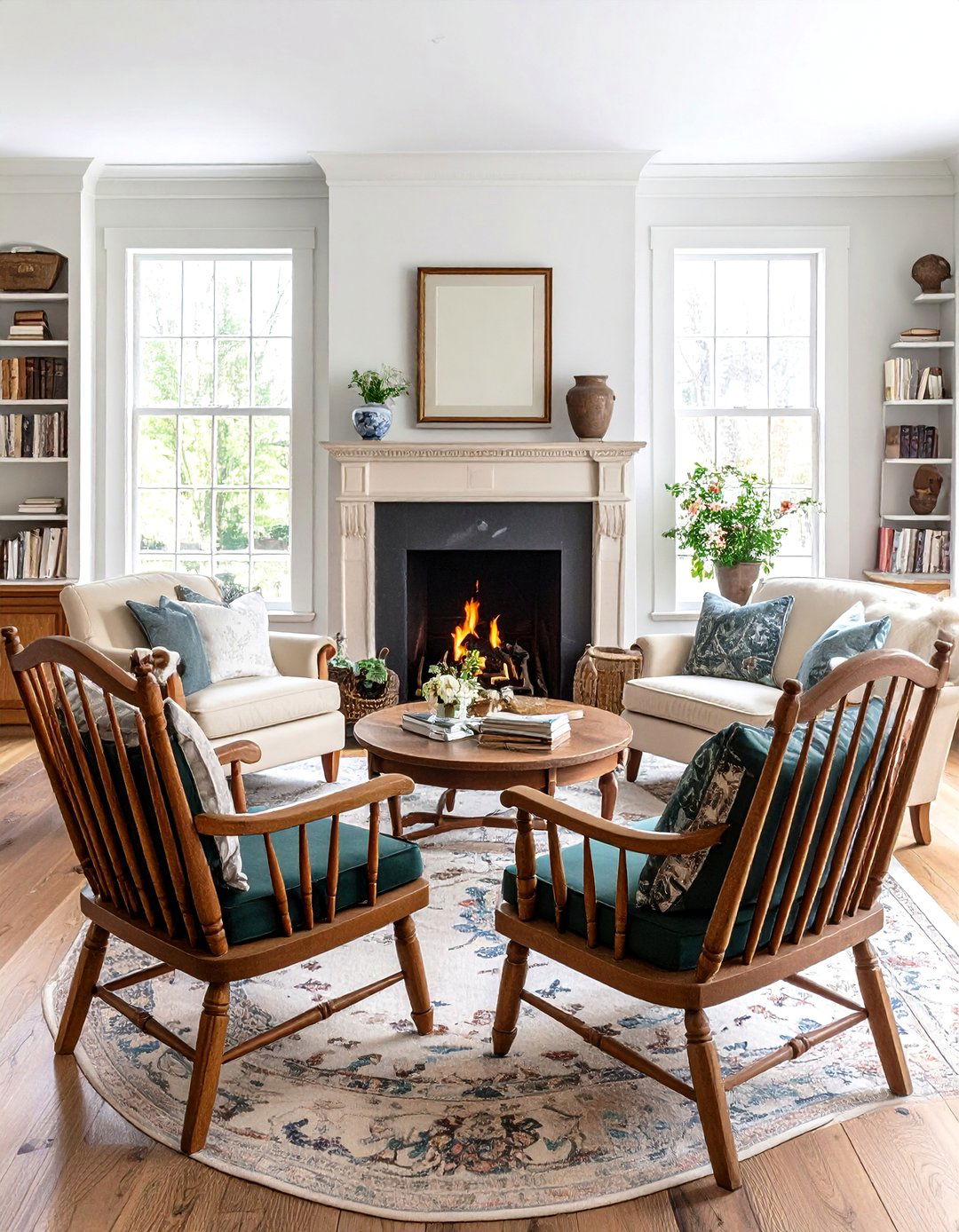
Windsor chairs with their signature high backs serve as conversation starters and authentic colonial seating. Incorporate these iconic chairs, recognizable by their spindle backs and solid wooden seats, throughout your colonial living room arrangement. Choose Windsor chairs in traditional finishes like dark green, black, or natural wood that complement your existing color scheme. Rattan or bamboo chairs add authenticity to colonial style homes. Position them as accent seating near windows, beside bookcases, or pulled up to side tables for reading. These handcrafted furniture pieces showcase timeless craftsmanship with simple, sturdy, and functional designs. Mix different Windsor styles—bow-back, sack-back, or continuous arm varieties—to create visual interest while maintaining period authenticity. Use auxiliary furniture such as rocking chairs to achieve natural and uncluttered effects. The graceful curves and practical construction of Windsor chairs perfectly embody colonial values of beauty, functionality, and skilled craftsmanship that defines this enduring American furniture style.
14. Colonial Living Room with Vintage Map and Travel Decor

Colonial style decorating includes world maps, maps of voyages, and ship models that remind us of travels and adventures. Create an authentic colonial living room display by incorporating these historical travel elements that reflect the period's connection to exploration and trade. Frame antique maps of the thirteen colonies, trade routes, or historical expeditions in simple wooden frames. Decorating in colonial style offers opportunities to display mismatched collectibles that tell travel stories. Antique suitcases, ship models, and voyage maps enhance colonial character. Arrange these pieces on mantels, side tables, or built-in shelving alongside other period accessories like brass compasses, nautical instruments, or leather-bound journals. Collected elements include magnifying glasses, coral and shells, and vintage trophies. This colonial living room theme celebrates the adventurous spirit and global connections that defined colonial America while adding sophisticated historical character to your space through carefully curated displays that honor exploration and discovery.
15. Colonial Living Room with Natural Linen Upholstery Fabrics

Natural fabrics including linen, silk, leather, and cotton define colonial textile choices. Create an authentic colonial living room by choosing furniture upholstered in high-quality linen fabrics that age beautifully and provide comfort in all seasons. Natural fibers such as cotton, linen, and silk are valued for their luxurious feel and breathability. Select neutral linen colors—ivory, oatmeal, sage, or soft gray—that complement your colonial color palette while showcasing the fabric's natural texture. A slip-covered sectional with neutral linen fabric accented with navy blue flowers creates ideal colonial appeal. Linen and white cotton dominate in colonial cushions and upholstery. Choose loose-weave linens that develop beautiful patina over time, honoring the colonial preference for materials that improve with age and use. Layering different textures through natural materials lies at the heart of colonial style. These breathable natural fibers provide practical comfort while their understated elegance creates the sophisticated simplicity essential to authentic colonial design.
16. Colonial Living Room with Built-in Bookcases and Display Shelving

Colonial living rooms often feature display cabinets, bookshelves, and sideboards. Install floor-to-ceiling built-in bookcases that serve both practical and decorative purposes in your colonial living room. Paint these storage units in classic white or soft cream to blend seamlessly with your walls while showcasing their contents. Custom bookshelves integrate fireplaces into rooms while displaying scholarly collections. Fill shelves with leather-bound books, pewter accessories, pottery, and small colonial decorative objects. Stacks of antique books enhance authentic colonial character. Display collected elements including ceramic jars, glass votives, picture frames, and botanical specimens. Design these built-ins with traditional proportions and simple molding details that complement your room's architectural features. Add a grandfather clock for functionality alongside colonial decorative elements. Create visual interest by varying the arrangement of books and objects while maintaining the organized, purposeful aesthetic that reflects colonial values of knowledge, craftsmanship, and practical beauty.
17. Colonial Living Room with Traditional Plaid and Check Patterns
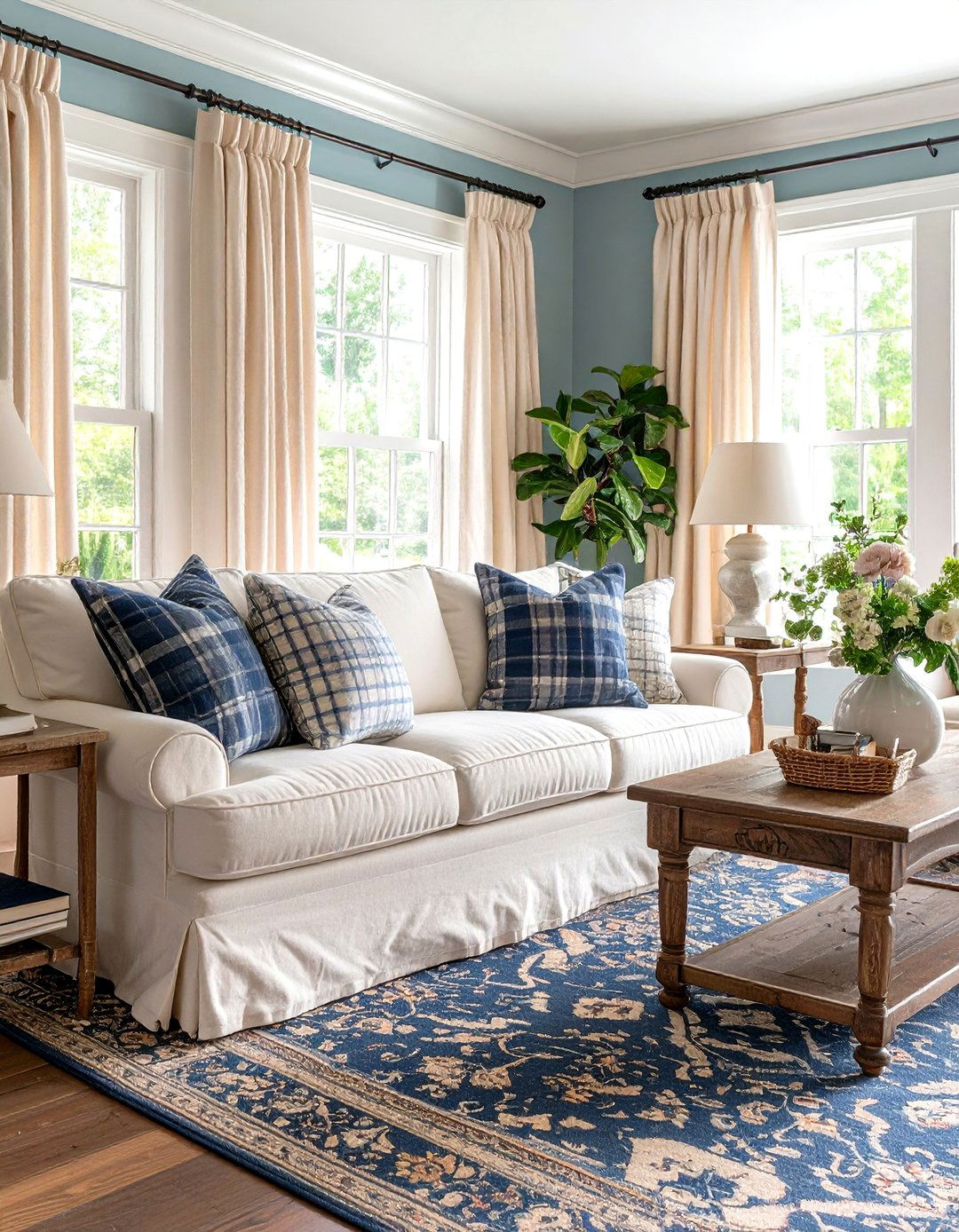
Check or plaid-patterned curtains and cushions liven up colonial spaces while maintaining authentic character. Incorporate these timeless patterns through throw pillows, window treatments, and upholstery to add visual interest without overwhelming your colonial living room. Choose traditional color combinations like navy and cream, forest green and burgundy, or brown and gold that complement your neutral base palette. Woven fabrics, plaids, and florals work beautifully for colonial curtains and upholstery. Geometric patterns offer connections to traditional culture and craftsmanship. Layer plaid patterns carefully—pair a plaid sofa with solid throw pillows, or add plaid curtains to rooms with neutral furniture. Small touches of intense colors like muted red, orange, or lime green add warmth to colonial schemes. These patterns reflect the weaving traditions brought by European settlers while providing the visual texture that makes colonial living rooms feel warm and lived-in rather than formal and museum-like.
18. Colonial Living Room with Copper and Brass Accent Details
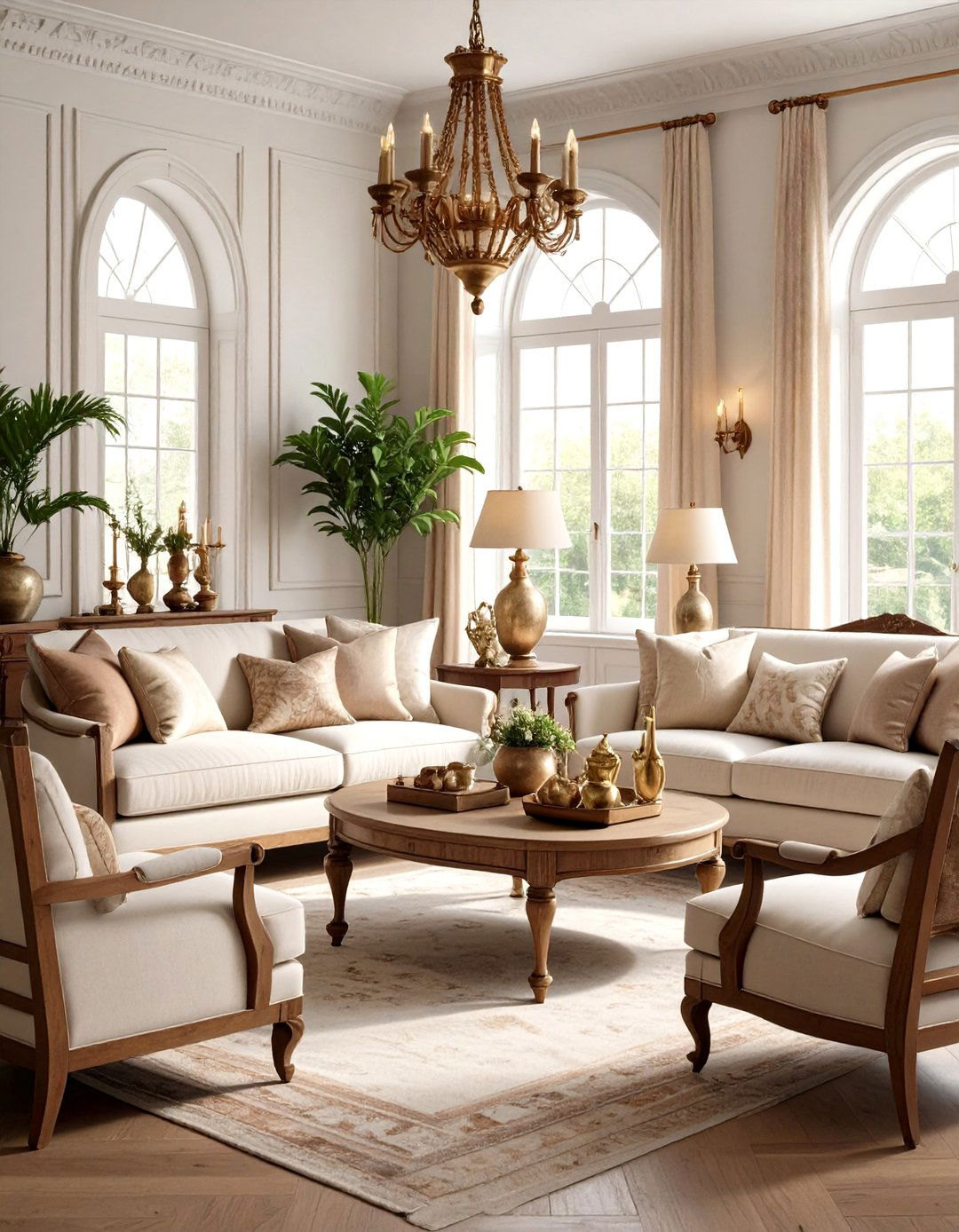
Colonial interiors feature copper and burnt umber touches alongside brass accents for authentic metallic elements. Incorporate these warm metals through lighting fixtures, fireplace accessories, and decorative objects that enhance your colonial living room's historical character. Find metallic details in bronze, brass, or silver for door handles, lamps, and accessories. Choose brass candlesticks, copper planters, and bronze picture frames that develop beautiful patina over time. Display bar tools and glassware on decorative trays as colonial entertaining elements. Install brass hardware on furniture and built-ins, and select copper or brass andirons for your fireplace. Gold framed mirrors, candlesticks, and metal urns add vintage-inspired colonial flair. These metallic accents should appear naturally throughout the space rather than in obvious groupings. The warm tones of copper and brass complement the rich wood finishes and neutral fabrics essential to colonial design while adding the subtle luxury that reflects colonial prosperity and craftsmanship traditions.
19. Colonial Living Room with Traditional Grandfather Clock Feature
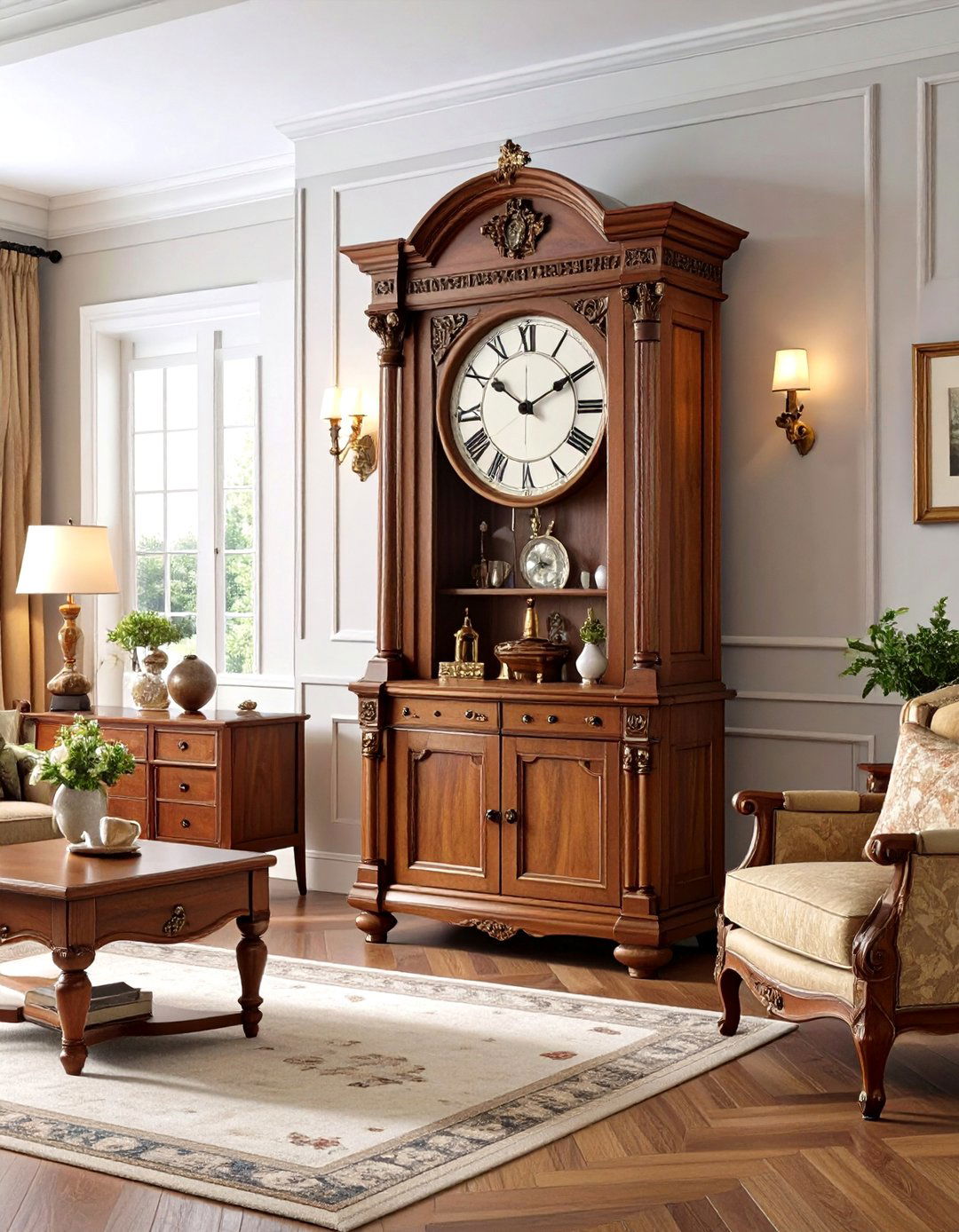
Add a grandfather clock for functionality and elegant colonial character that enhances traditional living spaces. Position this stately timepiece in a corner or along a wall where it can serve as both a functional piece and an impressive decorative element. Choose clocks with wooden cases in cherry, walnut, or mahogany that complement your colonial furniture finishes. Small bookcases and auxiliary furniture create natural, uncluttered colonial effects. The tall, vertical line of a grandfather clock adds architectural interest while its mechanical chimes provide the pleasant sounds that bring colonial living rooms to life. Traditional handcrafted furniture maintains functionality while displaying unique artistry. Select clocks with brass movements and moon phase dials that showcase the period's appreciation for fine craftsmanship and astronomical knowledge. Classic accessories merge functionality with decoration in colonial style. This colonial living room centerpiece represents the colonial era's respect for precision, craftsmanship, and the practical beauty that combines usefulness with artistic expression in everyday household objects.
20. Colonial Living Room with Seasonal Fireplace Mantel Styling
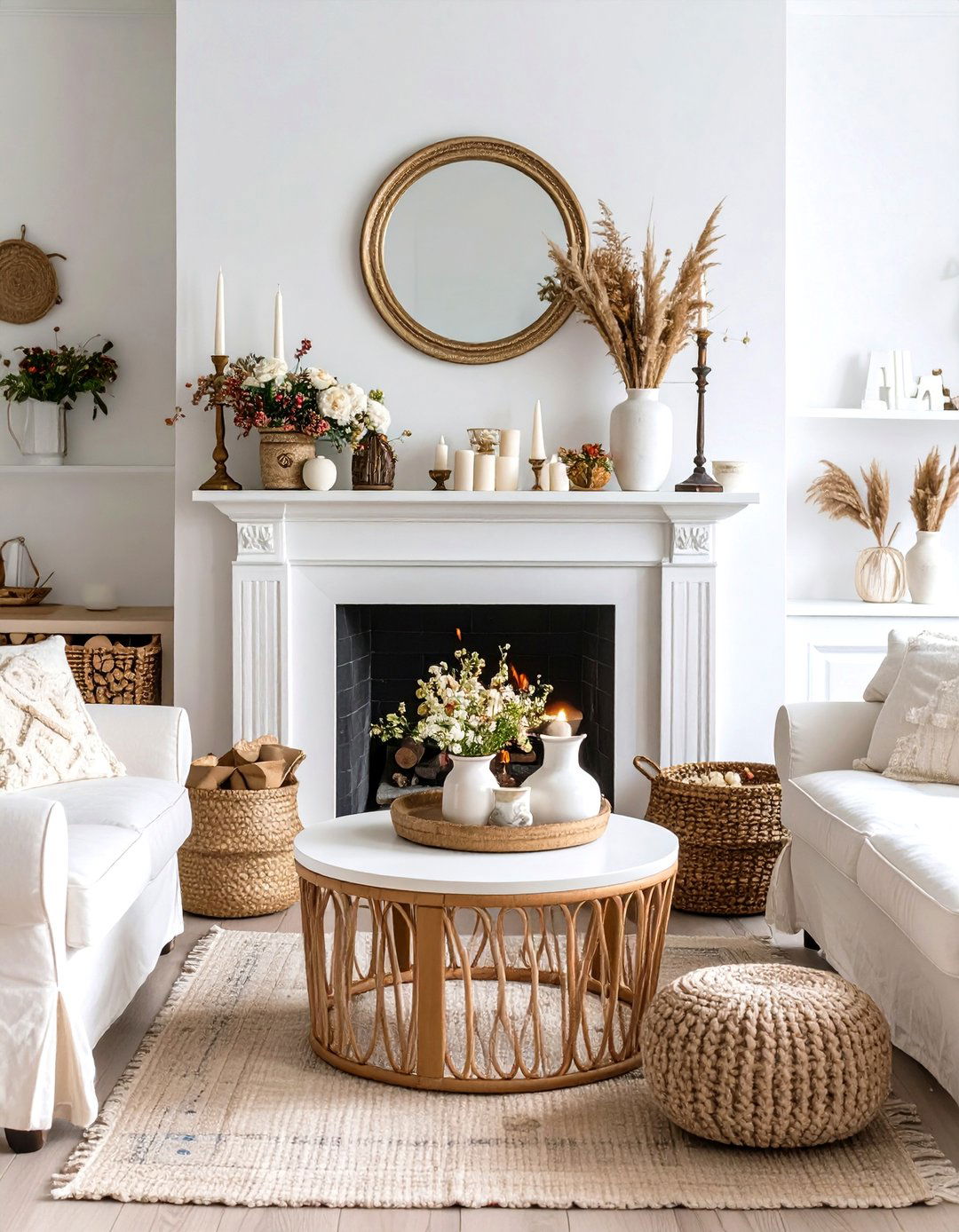
The mantel provides perfect opportunities to showcase seasonal decor, beautiful art, or personal collections that make colonial spaces meaningful. Style your colonial living room mantel with rotating seasonal displays that honor traditional colonial celebrations and natural cycles. Early American elements such as pewter, candles, and antique photos traditionally decorate colonial mantels. Spring arrangements might feature fresh pussy willows and daffodils in pewter containers. Summer displays could showcase dried herbs, colonial pottery, and miniature ship models. Layered garlands and candles create seasonal colonial charm. Fall arrangements work beautifully with pumpkins, gourds, and autumn leaves in traditional baskets. Mix antique candle holders, ceramic vases, and wooden sculptures to tell colonial stories. Winter displays might feature evergreen branches, colonial-style candles, and family heirlooms. Make mantel space meaningful by adding something unique to your family heritage. This approach keeps your colonial living room fresh and engaging while maintaining historical authenticity through carefully chosen seasonal elements.
Conclusion:
Colonial living room design offers timeless appeal through its masterful combination of historical authenticity, practical functionality, and understated elegance. These spaces successfully blend comfort with sophistication while honoring America's architectural heritage. From traditional fireplace surrounds to carefully chosen color palettes, each element contributes to creating warm, inviting environments that feel both historically grounded and comfortably livable. The overall atmosphere should emphasize comfort and historic charm through natural materials, quality craftsmanship, and thoughtful arrangement. Whether incorporating authentic antiques or quality reproductions, successful colonial living rooms celebrate the enduring principles of simplicity, functionality, and natural beauty that defined early American design while meeting contemporary lifestyle needs.


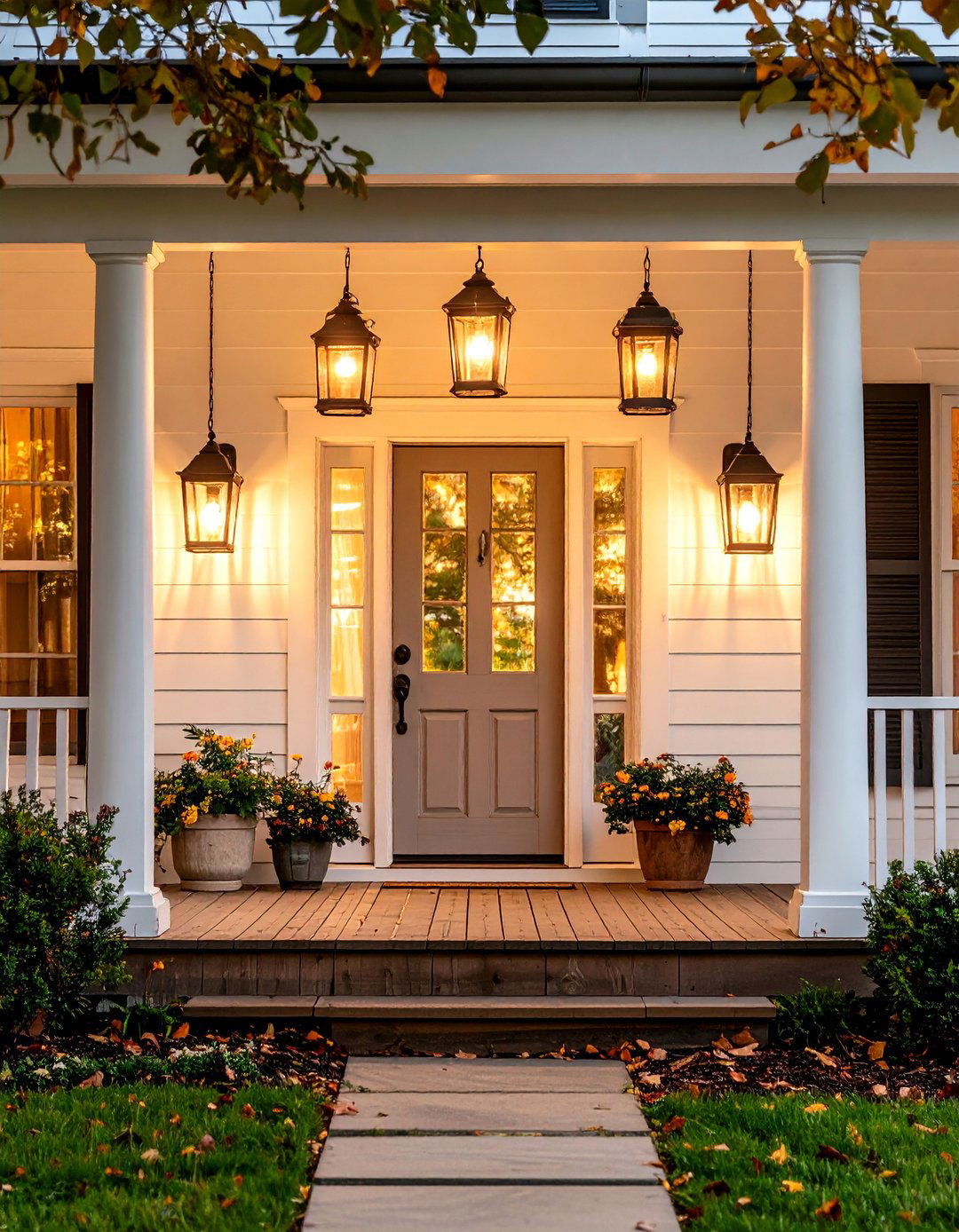

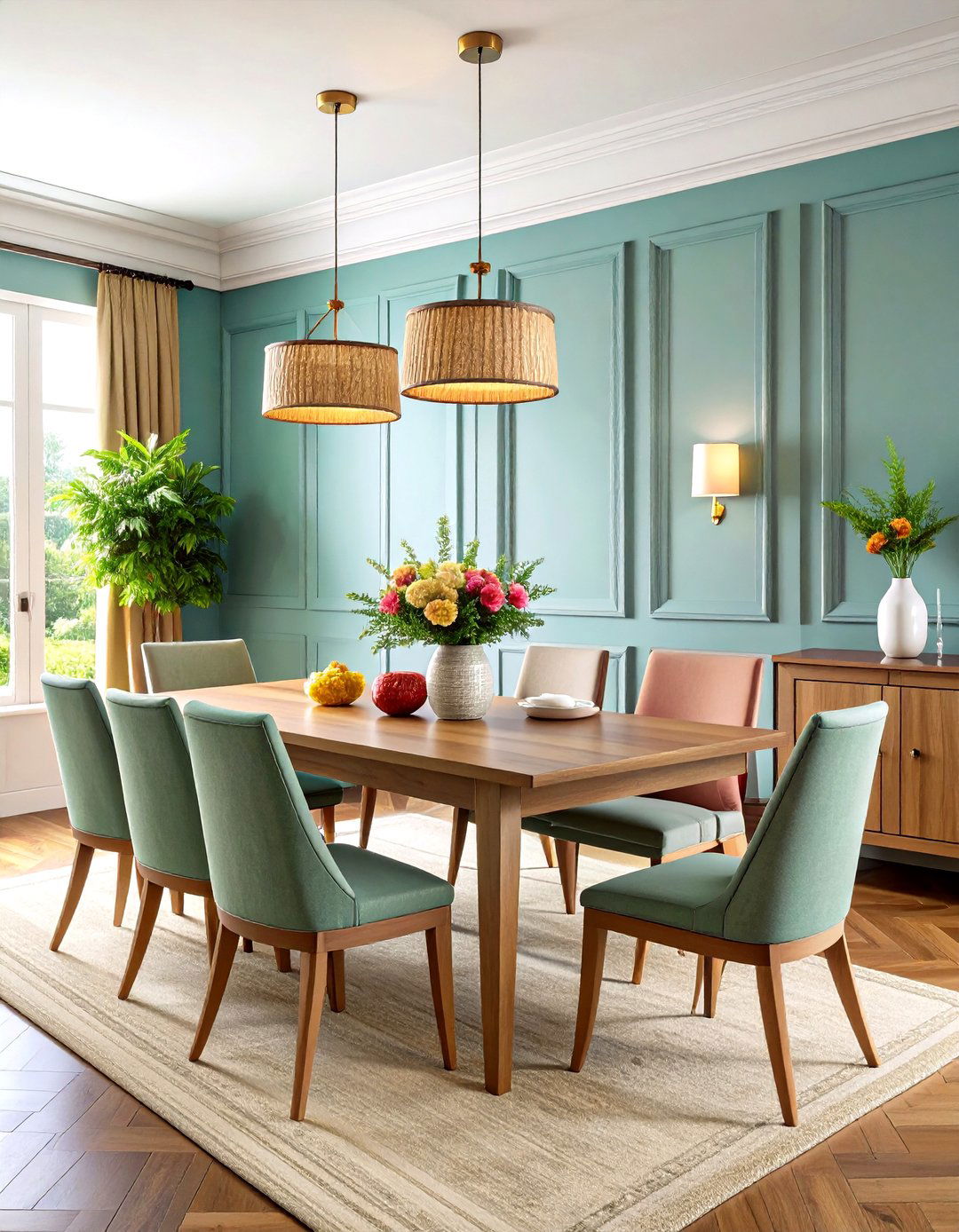
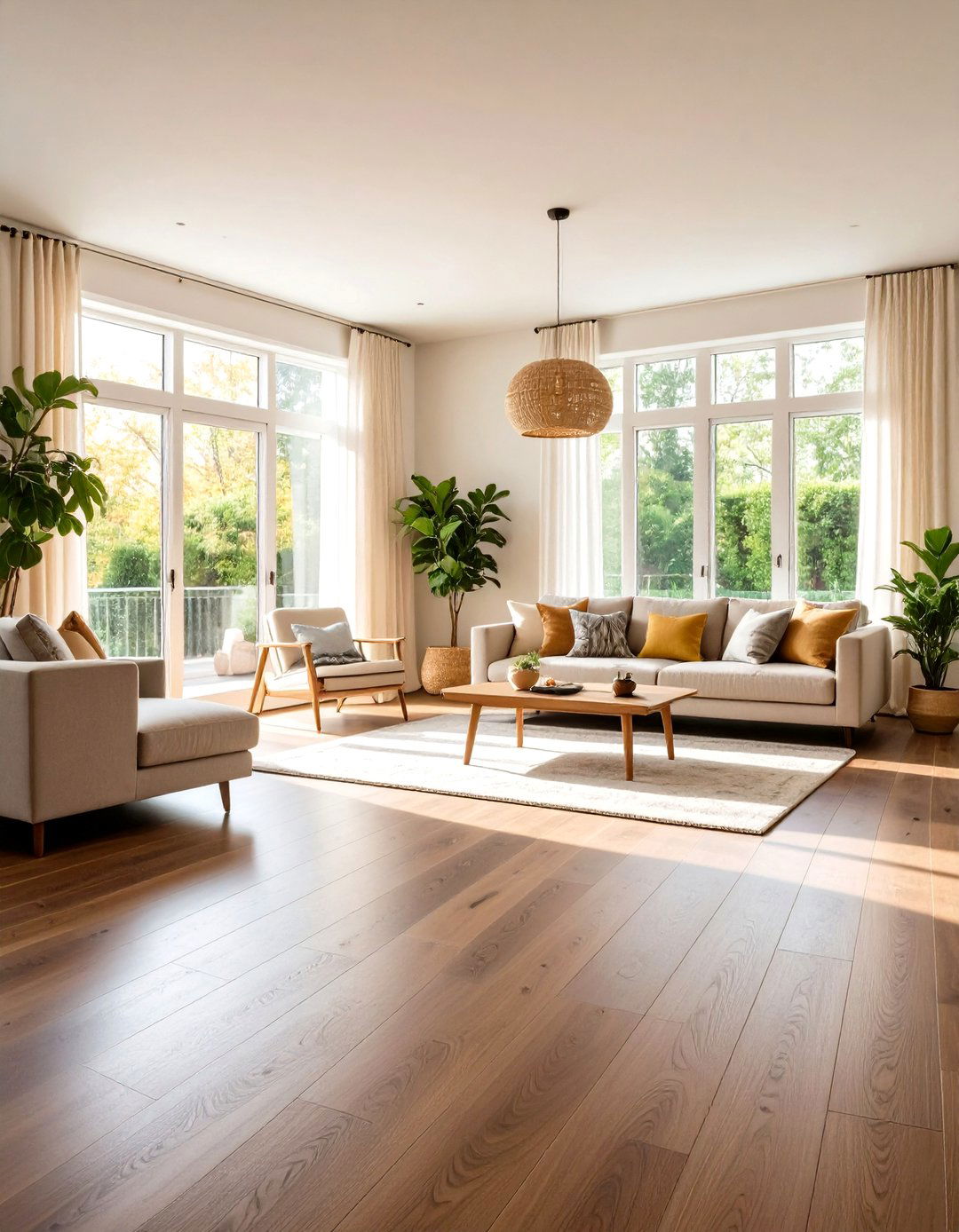
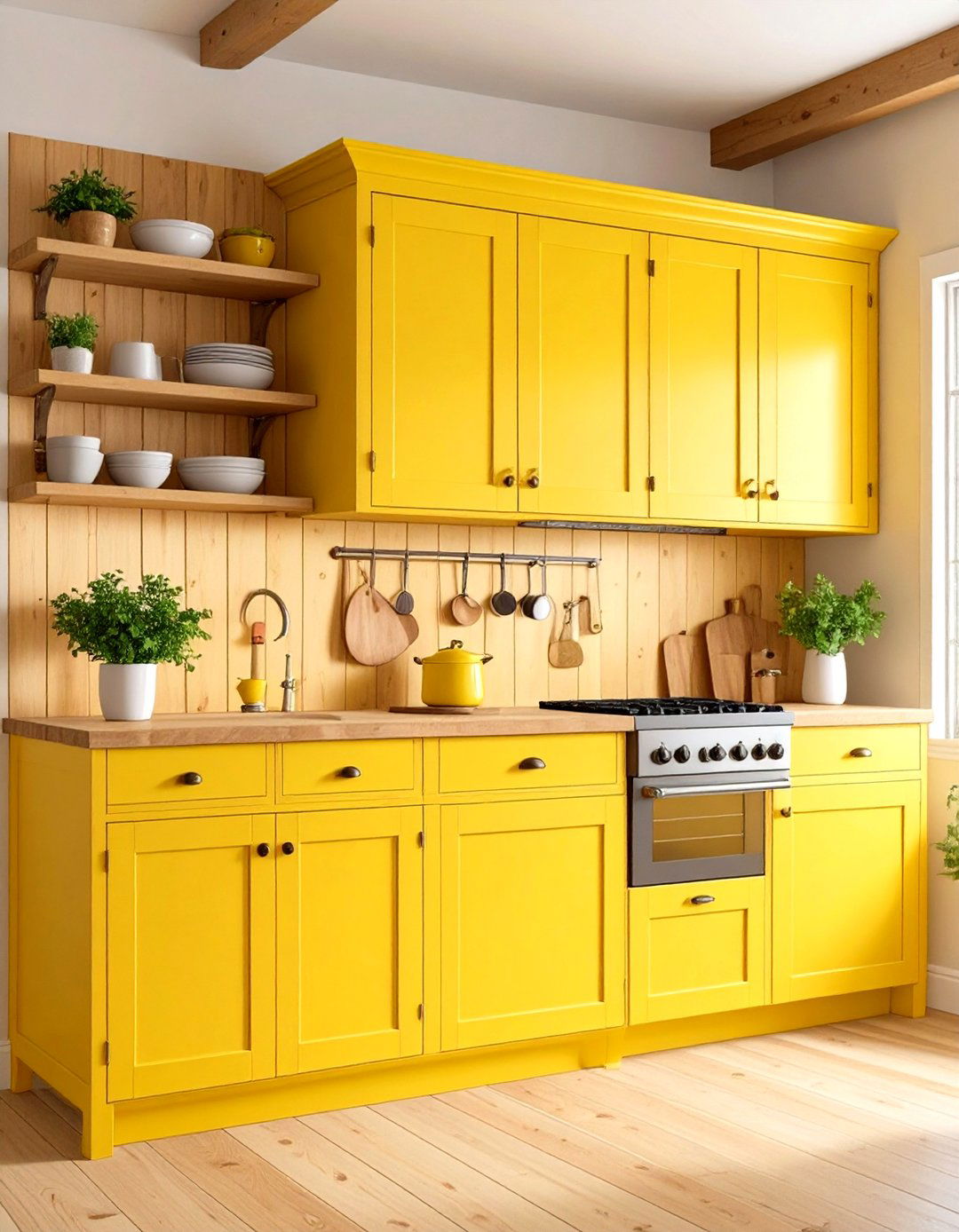
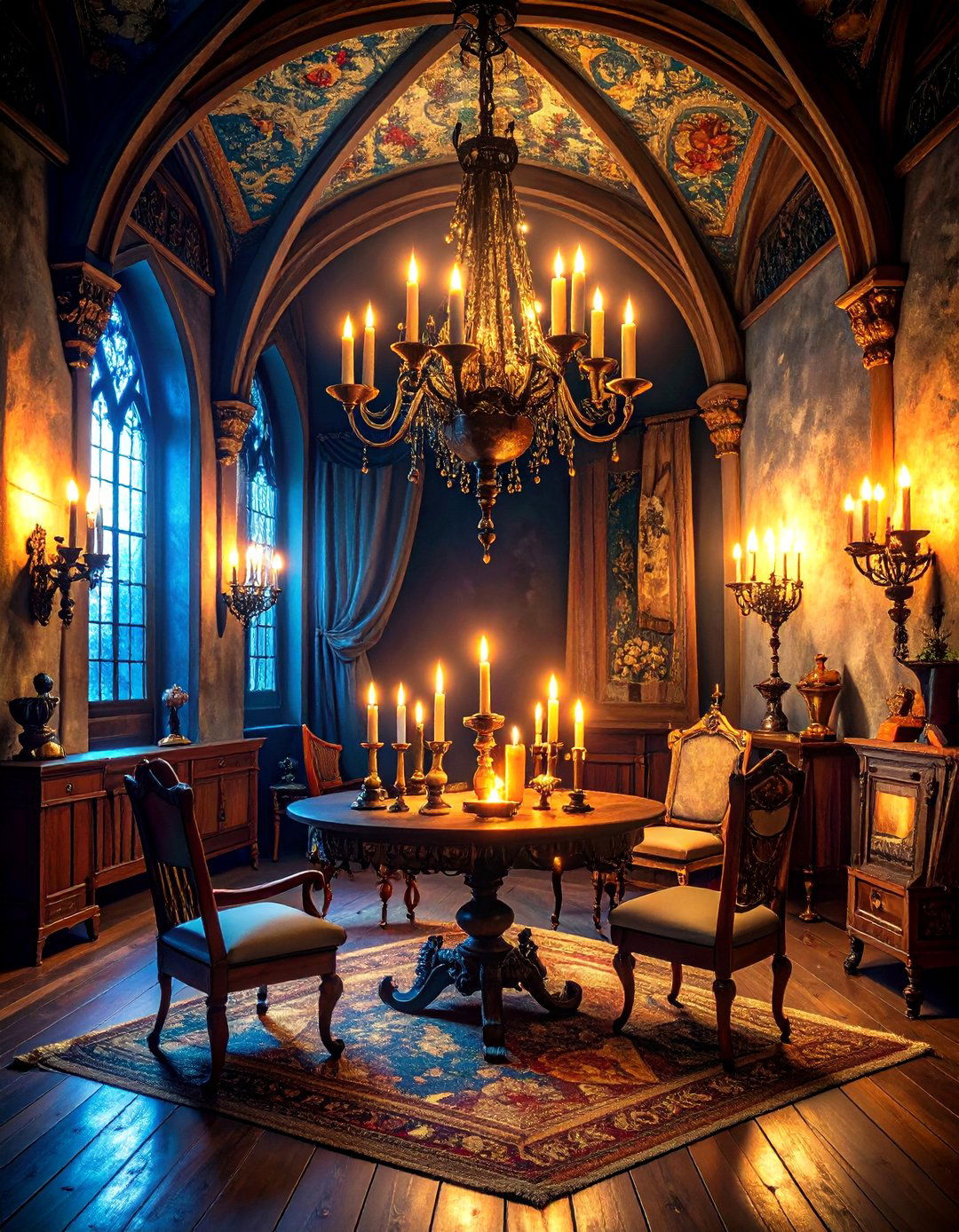
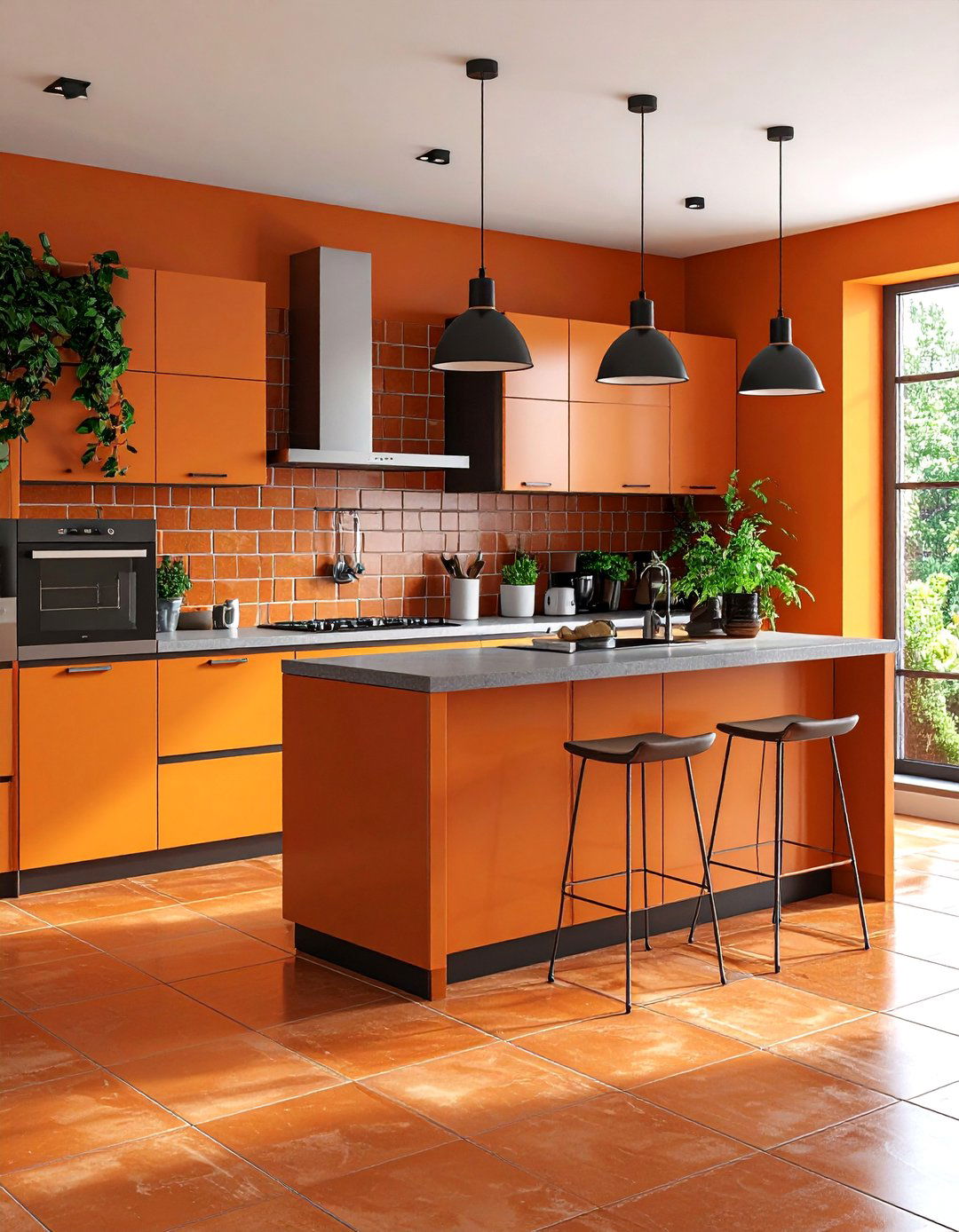
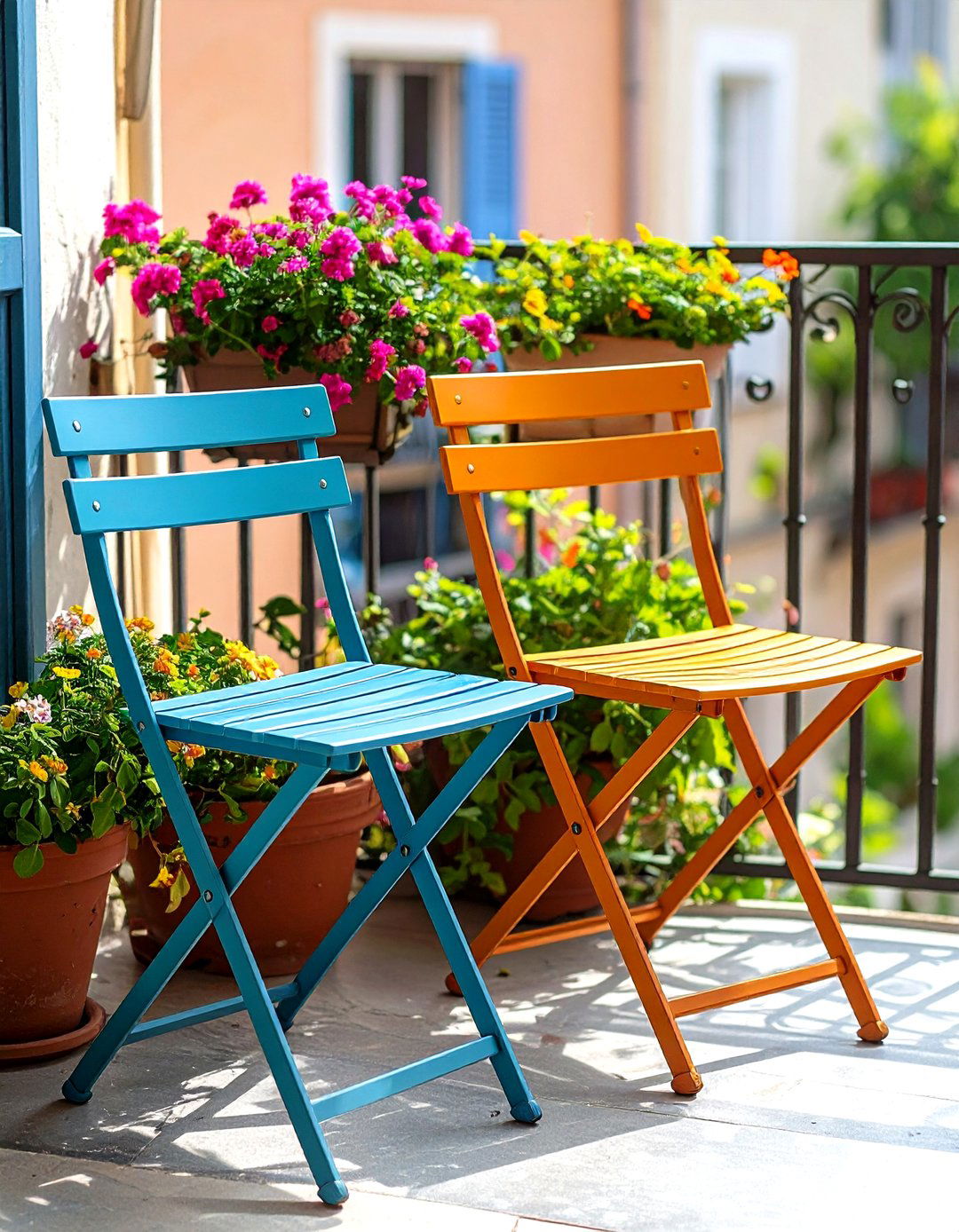
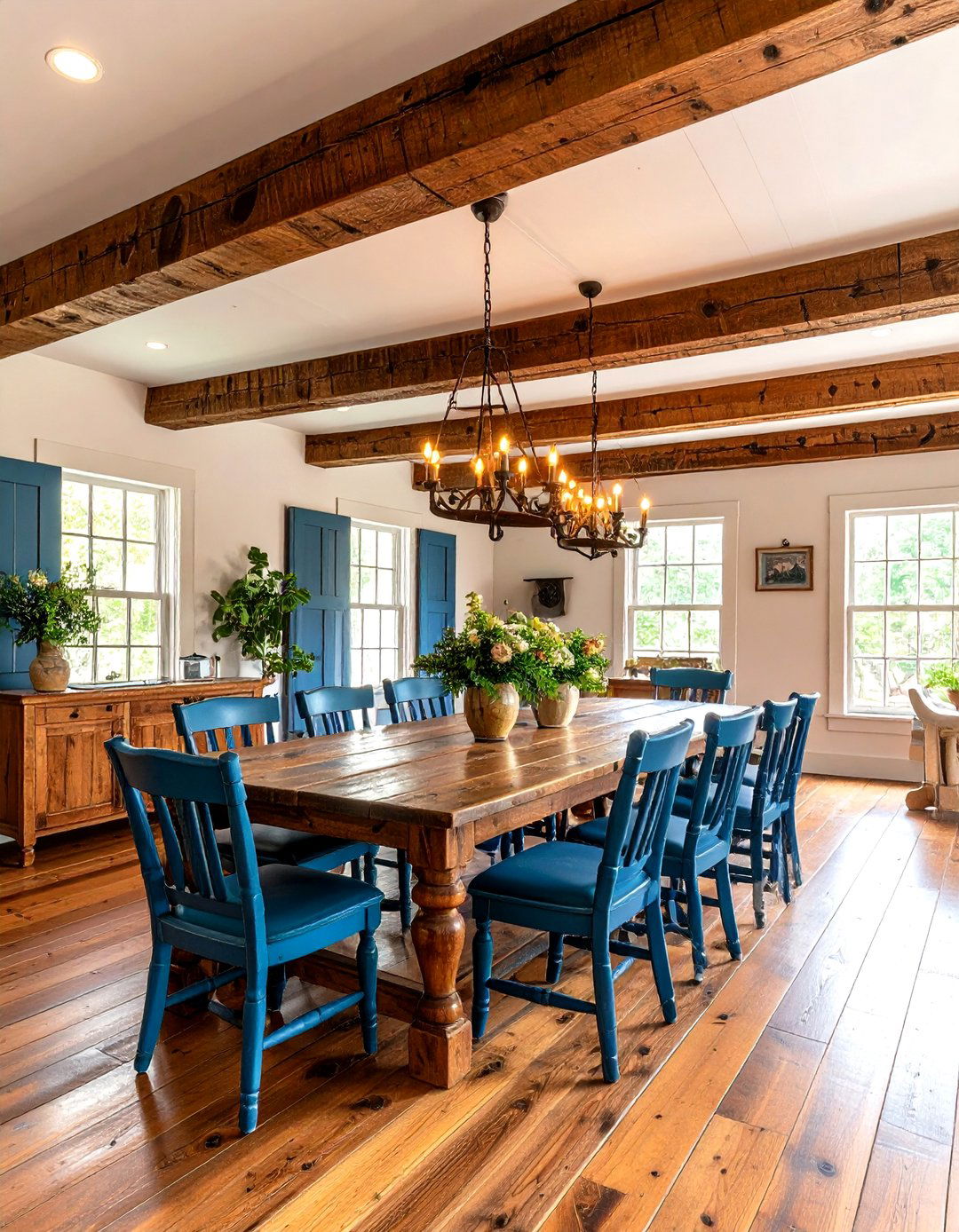
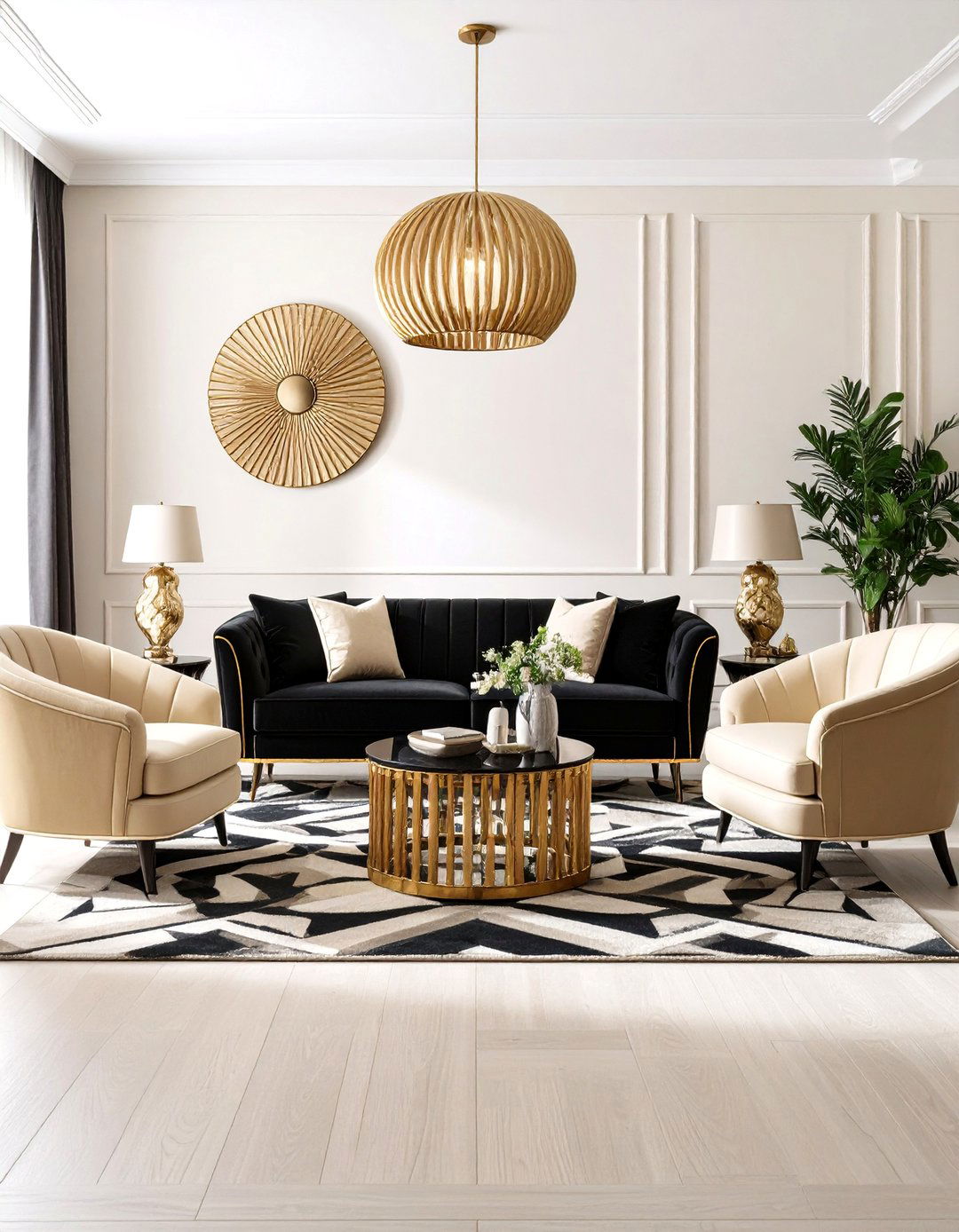
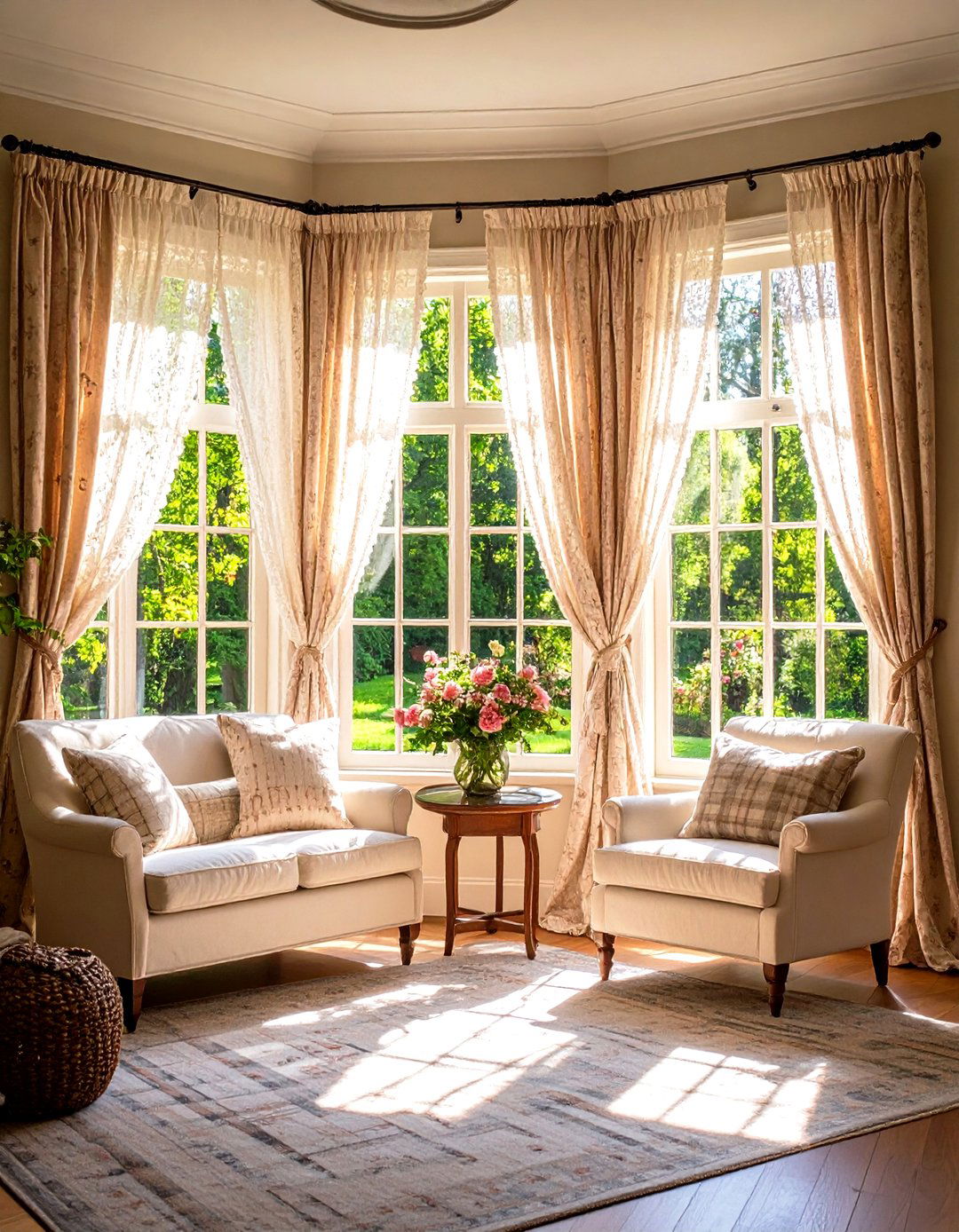
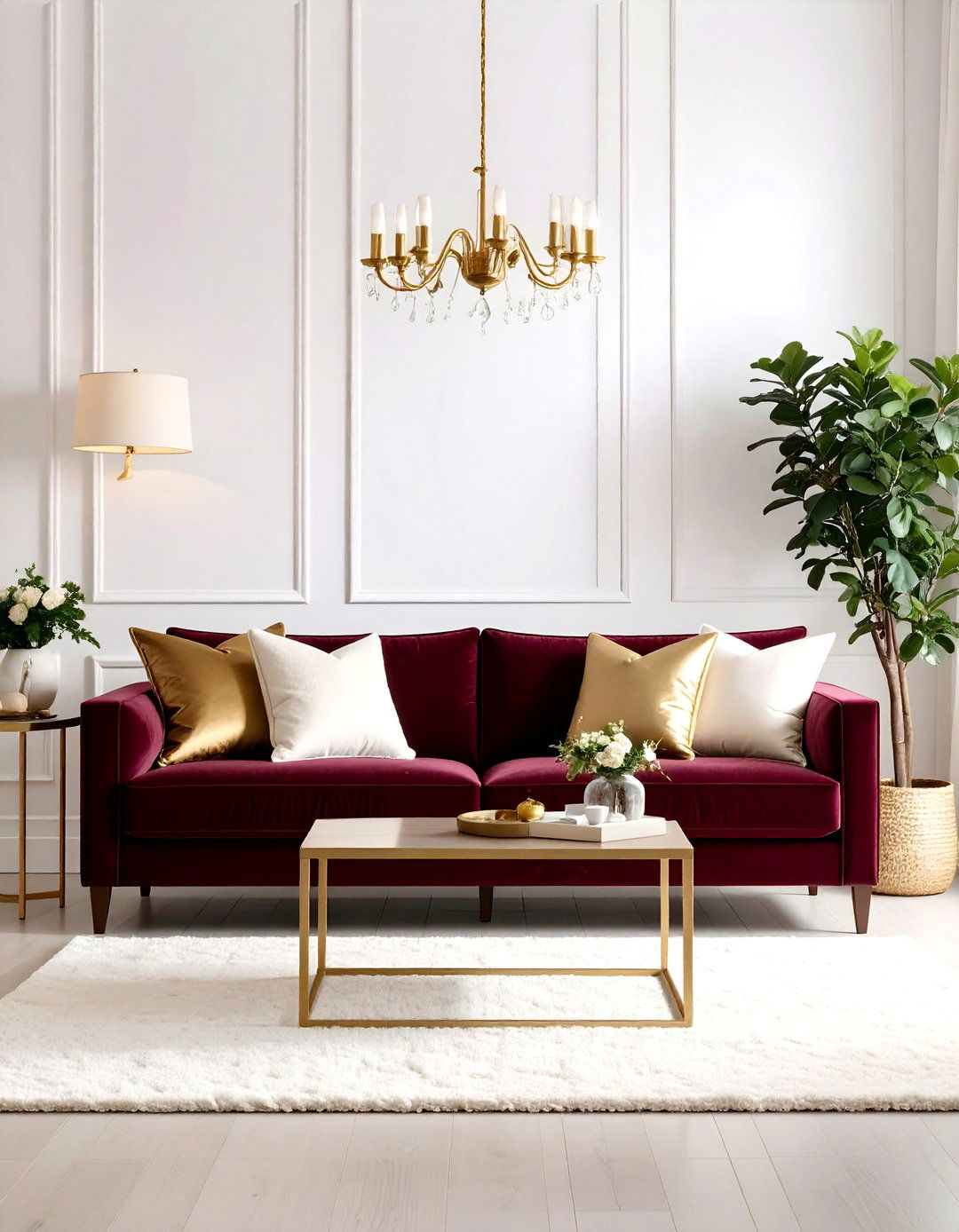

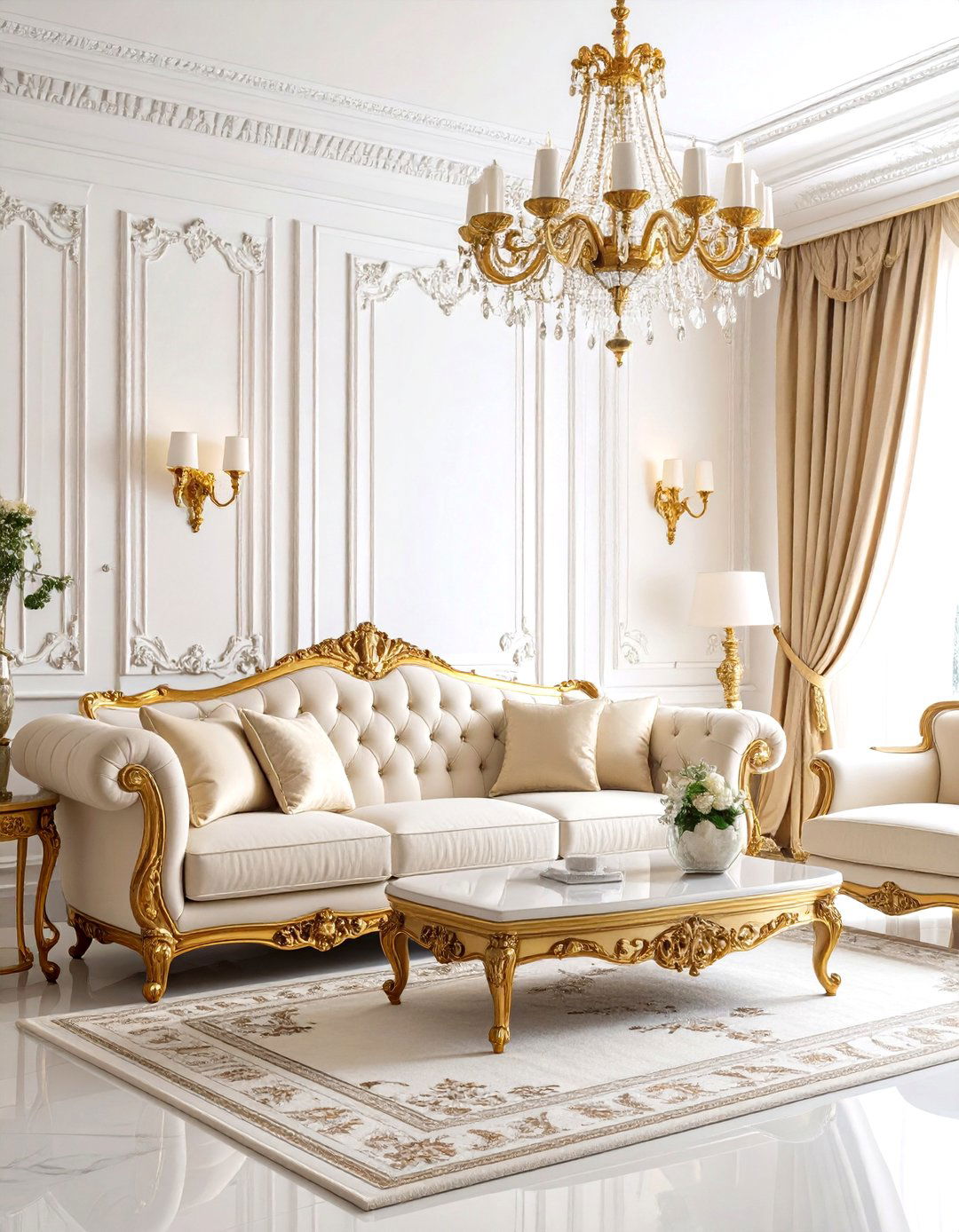
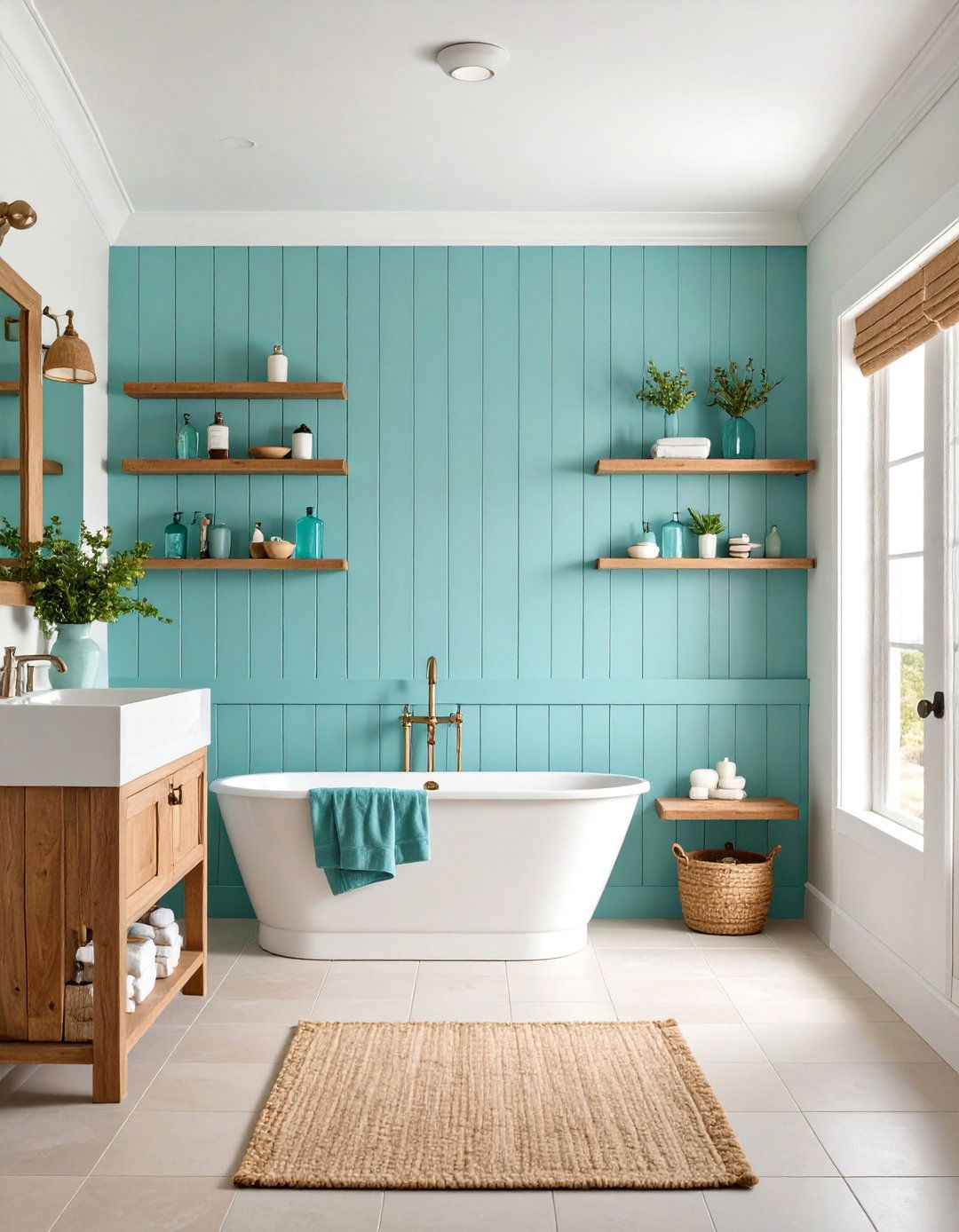
Leave a Reply